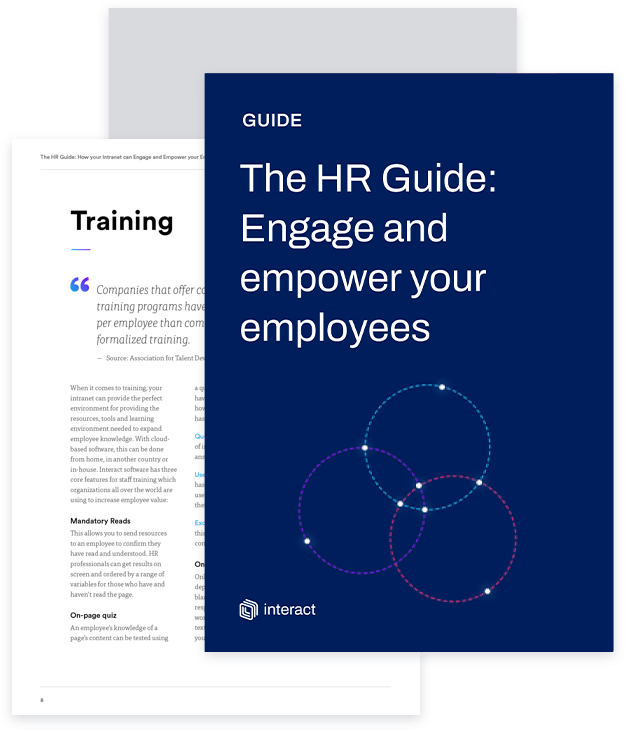With an increasing focus on diversity in the workplace, we look at why it matters and what today’s organizations can do to change the notion of business being predominately white, straight, and male.
It’s official. Diversity makes us smarter.
After decades of research from experts in sociology and psychology, economists, and organizational scientists, socially diverse have been proven to be more innovative than homogenous groups.
This means, the more varied your teams are in gender, sexual orientation, ethnicity, and race, the better they are at comprehending complex ideas, working together towards solutions, and collaborating to solve problems more efficiently.
While it makes sense that groups with more diverse expertise are more likely to be better at solving complex, non-routine challenges, science has proven that social diversity brings about the same benefits.
Why? Simply put, people with different backgrounds bring different angles and new information. Not only this but just interacting with different people adjusts each personal mindset, enabling the individual to take on alternative viewpoints and understand the effort required in reaching a consensus.
How do you incorporate diversity in your workplace?

Of course, building a diverse workplace starts at the hiring stage. To this end, you need to look at your recruitment practices. Are your methods of sourcing candidates inclusive enough?
Consider using a job board specializing in diversity. There are plenty of recruitment agencies that specialize in ex-vets, people with disabilities, individuals on the autism spectrum, and people of color. Revise your current methods. Are you currently hiring talent in close proximity to your offices? Why? Off the back of 2020, remote working has proven itself to be just as effective as in-office working. A global talent pool is within easy reach and could provide you with different specialties that could transform your business.
Advertise your focus on a diverse workplace. People are actively looking for a diverse and inclusive workplace. Jobseeker searches for the term “diversity” rose about 222% year-over-year, according to July data from employment marketplace provider ZipRecruiter. According to Staffbase, most Americans are looking to work for a diverse modern workplace, with three-quarters of those polled stating that it’s very (49 percent) or somewhat (26 percent) important for companies and organizations to promote racial and ethnic diversity in their workplace.
Diversify your interview panel. Aside from recruitment, the next important stage for diversity is the interviewing stage. Ensure that at least at one stage during the interviewing process for each candidate you have a diverse group of people taking part. These people should be able to help you uncover unconscious biases and improve the fairness and equality principles of your whole recruitment process.
Tokenism

“If a company is hiring diverse candidates for diversity’s sake alone, then the risk is tokenism, which is harmful and isn’t necessary when there is an abundance of diverse talent out there.”
What is tokenism? According to Merriam Webster, it’s the practice of doing something (such as hiring a person who belongs to a minority group) only to prevent criticism and give the appearance that people are being treated fairly”. The individual isn’t being hired for their skills – but for their appearance. This may be done to minimize any criticisms of the lack of diversity in the workplace. In terms of creating an equal workplace – handpicking candidates for their ‘look’ is a very shallow initiative, as well as being very offensive to your talent pool.
Empower and engage your employees – an intranet for HR
However, tokenism is very hard to prove. If you’re the only person in the organization of color, for instance, were you a token hire? Or has the organization realized its lack of diversity, and you were one of the first few hires at the beginning of this initiative? The determining factor is intent. If the business recognizes that its hiring process is problematic and is attempting to reset its policies for DE&I, it could be argued that their aim is honorable. On the other hand, if the organization is systematically handpicking ‘faces’ to offset any critique, there is a problem that needs urgently addressing.
How do you avoid tokenism?

As we’ve discussed, the most well-meaning, forward-thinking organizations are at risk of accusations of tokenism. So, how do we as business leaders ensure that our workforce represents our approach to inclusivity?
HR has three components to prevent tokenism: diversity, equity, and inclusion. We’ll break these terms down for clarity.
Diversity: Workplace diversity has become a buzzword in business. But it’s crucial for it not to lose its true meaning, which is to have a workforce from a range of backgrounds, including ethnicity, race, socioeconomic class, nationality, socioeconomic class, and gender.
Equity: This is ensuring everyone within your organization has equal access to pay raises, resources, mentors, promotions, responsibilities. It’s not the same as equality, which is having the same allotted benefits to everyone whether it’s appropriate or not. Equity is slightly different in that it attempts to identify the specific needs and requirements informed by demographic traits such as ethnicity, nationality, age, gender, etc. It then tries to address the differing needs of each group by bridging the gap between minority and majority groups.
Inclusivity: Inclusivity in the workplace means that each employee, no matter their background, feels welcomed and valued within the group. Many employees have a strong sense of identity linked to their religion, nationality, sexual orientation, and so on, but feel they need to leave this side of themselves at home. Employers must work hard to nurture an inclusive culture that extends to every individual. This creates a multi-dimensional culture at work that enables the employee to express who they are, feel valued, and add value. After all, each person has a set of experiences that can be leveraged to benefit the entire business.
The bottom-line benefits of DEI

While DEI should be a prerequisite in talent acquisition in every organization, the benefits are manifold:
Higher profit margins
While corporate bottom lines shouldn’t be a reason for nurturing a diverse workforce, it’s an undeniable truth: those businesses who are proven to have a healthy diversity record also have higher profit margins. In fact, a recent study in the Harvard Business Review found that companies with above-average total diversity have 19% points higher innovation revenues and 9% points higher EBIT margins, on average.
Empower and engage your employees – an intranet for HR
Optimized performance
A report from Deloitte saw that those companies that had a strong history of maintaining a diverse, equitable, and inclusive workforce were twice as likely to meet or exceed their financial target. The study also saw that they were eight times more likely to achieve better business outcomes. This positivity impacts employee sentiment too, with happiness and satisfaction levels increasing in diverse workplaces.
Corporate bottom lines shouldn’t be a reason for nurturing a diverse workforce, but it’s an undeniable truth that those businesses who are proven to have a healthy diversity record also have higher profit margins.
Strong and steady growth

With this increase in performance and higher profit margins, steady growth inevitably follows. The Center for Talent Innovation studied publicly traded companies and found that those with greater diversity workforces were 45% more likely to have an expanded market share in the past twelve months than those who didn’t. The more diverse organizations were 70% more like to have captured a new market too.
Why DEI programs don’t always work

But why do businesses have such a hard time implementing such a program? The truth is there are several obstacles in the way of organizations achieving a seamless initiative that has a good balance of people from all backgrounds. These include:
Putting the theory into practice is difficult
So we know it’s the right thing to do, we’ve read all the benefits, so why isn’t something that makes so much sense, easy to carry out? Because a theory needs a plan, and for a diversity program to succeed, it needs to have the people and support to bring it to fruition.
Like any large-scale implementation, you will require people power and leadership buy-in to keep plans on track and objectives within sight. Ultimately, this initiative will impact everyone. Therefore every employee needs to understand what changes are taking place, and why. Effective communication at every level is critical.
HR suggestion: Many organizations set up a dedicated role to hold the business accountable for results. A new post, like a Head of Diversity within HR or talent acquisition, means that someone is managing the program and is reporting to line management regularly.
Your goals could be a lot different from your rival’s

You’ve seen a business implement a successful diversity strategy in record time. Surely, it’s just a case of replicating what they’ve done, right?
Wrong. Every business is different and has its own unique set of goals. Your diversity objectives need to align with these goals to be successful. This means you can’t copy what a rival organization has done. You need to shape your plan around your own specific culture. For example, you may have a strong LGBTQ community within your organization. So focusing on this area might not be a good use of time or resource. Instead, look at something like intersectionality and look at whether your workplace recognizes that your employees have more than one identity each.
Empower and engage your employees – an intranet for HR
HR suggestion: To work out what goals best suit your specific situation, ask for the feedback of your workforce. Employees will have a much better idea of what is – and isn’t – working in your organization and will be able to offer you places to focus your initiatives.
Managers are your mouthpiece

One of the biggest obstacles comes from senior-level. When managers don’t understand the concept, fail to realize the importance, or are just not communicating effectively, you have a major weak spot in your plan. The effect of management is critical within an organization, so promoting diversity initiatives with them on board is important. They are the ones who have a considerable influence on team members and, in this way, can act as cheerleaders for whatever program you plan to roll out. For something culturally sensitive as diversity and inclusion in the workplace, it is vital that appropriate training is given to each manager. It is important that this training is pitched correctly: what they learn will be passed down to their employees and taken on board.
HR solution: While this may be your initiative, it doesn’t mean you have to come up with the training! This is a discipline in itself, and there is a wide selection of training management companies with years of experience in DEI programs. These are the experts who will ensure the right language is used, handle any objections, and ensure continuity in your plan.
Bias is inherent
Unfortunately, bias in humans has always existed and remains a major stumbling block to every DEI strategy. Scientific research has repeatedly shown that most human decision-making is based on biases and beliefs – not facts or logic.
The fact that people may discriminate unintentionally – avoiding anyone whose first language isn’t English, having prejudices about those people of particular faiths – continues to have implications for understanding disparities in so many aspects of society. This may include, but not limited to health care, policing, education, and organizational practices like hiring and promotion. Even the most well-meaning employer may be guilty of it at some point in their career.
HR solution: Challenging these prejudices or unconscious bias (also known as implicit bias), educating on the vast range of ways we are different, and delivering a culture of tolerance and acceptance requires consistent and ongoing effort. Be aware of it and understand how to avoid bias or address it if you see it.
“This is unnecessary”
Don’t expect everyone to be onboard with the changes you wish to make. There may be some individuals who will resist. Some may feel like there is no need to focus further on this area, and some may just feel uncomfortable with change. Very occasionally, there may be an employer who will actively object to the strategy.
This could turn into another HR matter, but overall, it’s essential to keep consistent. Part of your role is to constantly educate your employees, spread your message and build a diverse workforce by leading by example.
HR solution: It’s important to remember that DEI strategies don’t happen overnight. You are managing a highly complex workforce, and each individual comes with their own agendas, identities, and motivations. As a result, your job is to simply help people understand your aims. While there will be a whole lot of people who will want to support your message, it’s essential to look out for those who are struggling to understand its importance. Your overall goal requires focusing, where possible, on results and outcomes – rather than aspirations. If your organization fails to meet its targets, own that and take responsibility, talking not only about what steps you take, but perhaps what needs to be done differently going forward.


